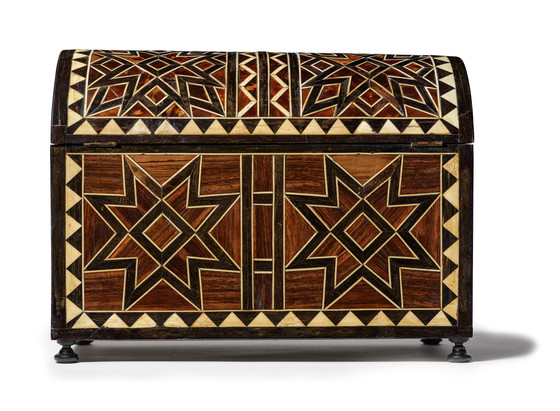Chest (Baulito)


Please log in to add this item to your gallery.
View comments
No comments have been posted yet.
Add a comment
Please log in to add comments.
Please log in to add tags.
* Nearly 20,000 images of artworks the museum believes to be in the public domain are available to download on this site.
Other images may be protected by copyright and other intellectual property rights.
By using any of these images you agree to LACMA's Terms of Use.
Special Things: Boxes in Spanish America
July 20, 2022
Opening a box invariably brings about a sense of wonder and discovery—even when we suspect what is inside. Small and portable, beautifully made boxes are designed to enclose special things; their exterior mirrors the precious commodities they contain, which are often kept under lock and key.
Chest (Baulito)
Furnishings; Accessories
Wood, metal, tortoiseshell, and bone
10 3/8 × 13 1/2 × 7 3/4 in. (26.4 × 34.3 × 19.7 cm)
Purchased with funds provided by the Bernard and Edith Lewin Collection of Mexican Art Deaccession Fund (M.2015.142.2)
Not currently on public view


